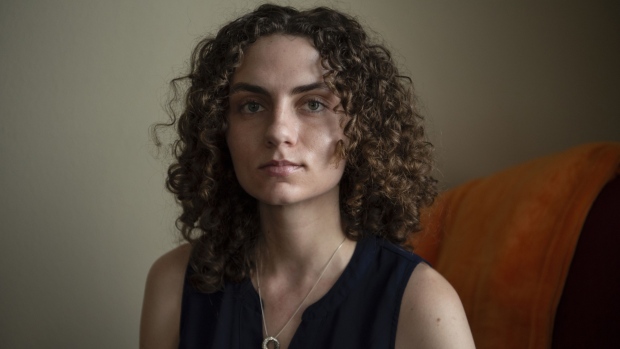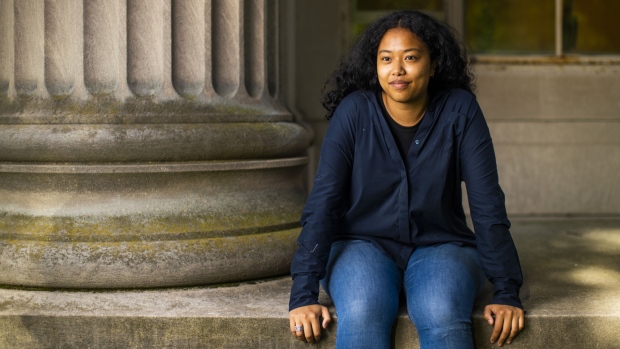Jun 4, 2021
MIT Bitcoin experiment nets 13,000% gain for students who held on
Bloomberg News
Cryptocurrency is a 1.7 trillion dollar asset class that’s here to stay: JMP Securities’ Devin Ryan
Mary Spanjers has a winning lottery ticket, tucked away in a drawer, uncashed. It’s an artifact of her freshman year of college seven years ago at the Massachusetts Institute of Technology. She took advantage of a free offer of something strange and new: cryptocurrency. One-third of a Bitcoin, to be exact. It was worth US$100.
Since then, this virtual pittance has skyrocketed in value. Before a May selloff, it could have fetched US$20,000 and still trades for about 13 grand — a 13,000 per cent return. “It’s truly remarkable,” Spanjers said of her windfall. “Most of us thought it was a bit of a joke.”
Spanjers, now a 24-year-old software engineer for oil firm Schlumberger in Houston, profited from a grand experiment, the MIT Bitcoin Project. In 2014, every undergraduate on the Cambridge, Mass., campus had the chance to claim fractional ownership of a Bitcoin, a string of code on an online ledger.
About 3,100 students grabbed the offer, which required only that they fill out long questionnaires and go over some educational handouts. They’d then set up a digital wallet, which holds the code that they could exchange for something of value, including cash.

The experiment was the brainchild of two “Bitcoin evangelists”: Dan Elitzer, then an MBA student who had just founded the school’s Bitcoin Club, and Jeremy Rubin, an undergrad computer science major. The pair sought “to take a glimpse into the future and see what's possible with this technology,” says Elitzer, now 37.
The MIT study illustrated that Bitcoin could function like an investment — or, as MIT Alum Alex Morcos, co-founder of Bitcoin researcher and developer Chaincode Labs, put it, “an asset, a store of value.” Morcos provided about US$250,000 — or half the money raised — to buy Bitcoin for the experiment.
Back then, the enterprise was dismissed as something of a failure. The bookstore installed a Bitcoin ATM and began accepting the new currency, but only a few dozen students ever used it. “Bitcoin Doesn’t Gain Much Currency at MIT,” a 2016 Boston Globe headline read.
After zooming to a record high of almost $65,000 in mid-April, Bitcoin has retreated to around US$36,000. A spotlight on environmental risks — and the way tweets from prominent personalities drive swings in prices — have undermined the narrative that it will gain more mainstream adoption. On Friday, prices were down after a cryptic tweet from Elon Musk.
Still, the biggest believers in crypto argue the token is consolidating before a fresh run to new highs.
Today, no one knows how many of the MIT alums, still in their 20s, are nursing tidy nest eggs — or just some serious regrets. If, like Spanjers, every student had held on, their Bitcoin in May would have been worth more than US$60 million.
One in ten cashed out in the first two weeks — one in four, by the time the experiment ended in mid-2017, according to Christian Catalini, an MIT associate professor in its business school who oversaw the study.
Some of the luckiest MIT grads forgot about it, as if they had found a quarter on the sidewalk and threw it in a jar. They may now have enough for a car or a house down-payment.
“Sometimes if my friends or co-workers talk about cryptocurrency, I'll be, like, ‘Oh, yeah, that's the thing I have,’” says Marilynn Bach, now an engineer at actnano Inc., a Boston area start-up that makes protective coatings.
For others, the experience introduced them to careers in a burgeoning industry. They include the study’s creators. Elitzer now runs Nascent, a crypto investment firm. Rubin helps build the technology supporting Bitcoin as chief executive officer of Judica Inc. Catalini co-created the Facebook-backed cryptocurrency Diem, formerly Libra.
Erick Pinos, an MIT student who sold his free Bitcoin, nevertheless bought more and now works for a crypto technology company called Ontology. He says he keeps 100 per cent of his savings in Bitcoin and crypto. “I'm all about cryptocurrencies,” he says.
Such students have helped put MIT – known for its connection to breakthroughs like the microchip and radar — in the forefront of another emerging technology. In 2020, CoinDesk, a cryptocurrency news site, ranked MIT as the top university for blockchain, the digital ledger used for verifying and recording Bitcoin and other cryptocurrency transactions.
Coindesk cited research centers such as the MIT Digital Currency Initiative, which Rubin co-founded the year after the Bitcoin project, and its crypto-related courses. It also tracked MIT’s prevalence in crypto-careers, which it measured by tracking the alma maters listed on the LinkedIn accounts of the largest and most influential blockchain companies.
Yet, as always, many missed the opportunity. Some let the offer expire without getting a key. Others later lost access to the coin because their wallets stopped operating or they could no longer sign into the associated email addresses.
Still others simply spent it on what may have seemed more appealing at the time: a mango smoothie, new shoes, pizza, beer. In online chatter, students joked about exchanging crypto for a 50-gallon drum of lube or just US$49 worth of burritos.

Sam Udotong, then a junior, created an app, called Fireflies, which let students spend money on food delivery. It won a hack-a-thon “awesome award.” Udotong, now 26, collected US$3 to US$4 in Bitcoin per delivery but unfortunately exchanged it for legal tender.
“If I had held on to that Bitcoin, it would have been more like US$300 to US$400 per delivery,” says Udotong, co-founder of a San Francisco artificial-intelligence company with the same name as his undergrad app.
Even worse, Udotong spent much of his own Bitcoin at a sushi restaurant then accepting Bitcoin called Thelonious Monkfish.
Some are philosophical. Selam Gano, a freshman at the time, spent her Bitcoin on food, too. She did better than many; it had appreciated three-fold, so she bought US$300 worth of groceries.
“It was free money, I don’t have any regrets,” says Gano, a robotics engineer at Pendar Technologies LLC, based in her alma mater's hometown of Cambridge. “I got an MIT degree, which is the most important thing to me.”
Her classmate Holly Haney blew her Bitcoin on food, too, and later kicked herself. “I needed to eat,” says Haney, now a video producer in Oregon, “and here was money.”
Spanjers, the software engineer who held on to her Bitcoin, had a close call. Online, she almost spent a fraction of her Bitcoin, on a US$35 “Doppler Effect” T-shirt for her dad, then thought better of it.
The sweet gesture would have cost her more than US$4,000. Or, as Spanjers said: “My dad would have had the most expensive T-shirt ever.”







